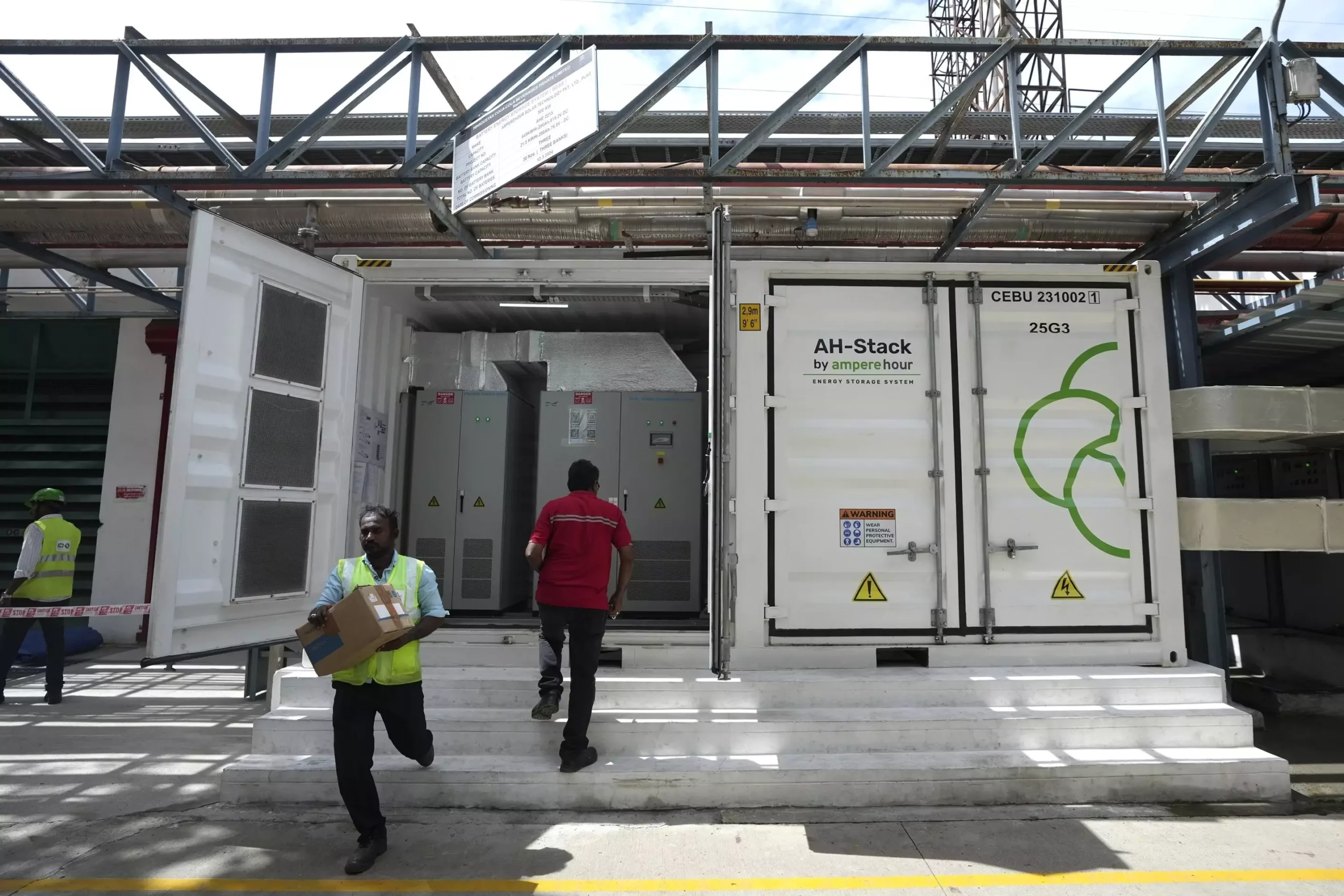In a Coca-Cola factory on the outskirts of Chennai, a giant battery is powering machinery day and night, replacing a diesel generator. This shift towards battery-powered energy is just one example of the changing landscape in India’s energy sector. While the country’s lithium-ion battery storage industry currently accounts for only 0.1% of global battery storage systems, it is growing rapidly. Around a third of India’s total battery infrastructure came online just this year, indicating a significant shift towards cleaner energy solutions.
India currently has approximately 100 megawatts of storage capacity from batteries, with an additional 3.3 gigawatts coming from hydropower. However, experts suggest that the country may need double that amount to meet its energy needs by 2032. Despite concerns about the initial cost of battery storage systems compared to traditional coal-based solutions, major Indian businesses are making significant investments in the industry. Companies like Reliance Industries and Goodenough Energy are planning to set up large-scale battery factories in different parts of the country.
Independent energy analysts emphasize the importance of ramping up renewable energy sources alongside increasing storage capacity. They argue that clean energy combined with adequate storage can serve as a viable alternative to coal. In fact, current prices of renewable energy, when paired with storage solutions, are becoming increasingly competitive with new coal-based projects. The declining costs of battery technology are making energy storage systems more attractive and cost-effective, positioning them as a key resource to meet peak electricity demands.
India faces unique challenges in its energy transition due to rapidly growing energy needs and extreme heat fueled by climate change. The country’s electricity demand is rising significantly, and it is essential to quadruple renewable energy deployment to meet this demand. To facilitate the growth of the battery sector, the Indian government has launched initiatives to support additional gigawatts of battery storage by 2031. However, challenges remain, as some utility companies still find coal-generated electricity to be a more economical option due to government subsidies.
The Role of Government Policies
The future of energy storage and transition in India heavily depends on government policies and support. Industry leaders and experts emphasize the need for incentives and subsidies for clean energy storage to level the playing field with traditional coal-based solutions. A significant policy change could kickstart the entire ecosystem and drive the country towards a sustainable energy future. As India prepares to announce a new national budget, there is hope among industry players that it will contain measures to promote clean energy storage and accelerate the transition towards cleaner and more sustainable energy solutions.



Leave a Reply